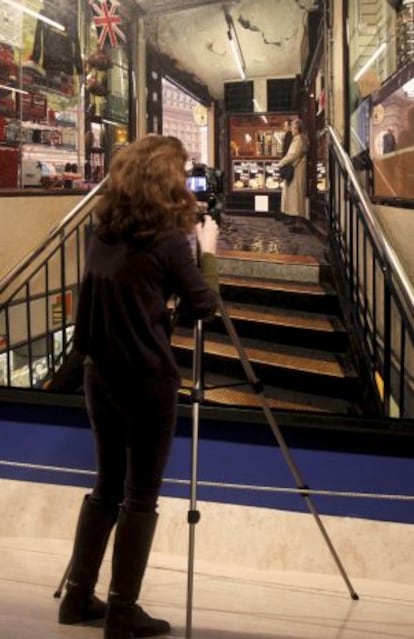Travels in hyperreality
Thyssen looks at our endless fascination with photorealism

Audrey Flack was the only female artist to be associated with the photorealism movement, which emerged in the United States in the mid-1960s before crossing the Atlantic to be rechristened "hyperrealism." As the New York art scene was busy swooning over conceptual art and the abstract expressionist works of Jackson Pollock and Willem de Kooning, she bravely struck out in the opposite direction, embracing the artistic style most maniacally faithful to reality.
Now in her eighties, Flack could well have been right. Hyperrealism has ended up becoming the most popular movement of both this century and the last. One of her most famous works, the still-life Queen (1976), is among the highlights of the Thyssen's new exhibition Hyperrealism 1967-2012, where it sits alongside over 60 pieces by other names associated with the movement, including Richard Estes, John Baeder, Robert Bechtle, Tom Blackwell, Chuck Close and Robert Cottingham.
Organized by the Institut für Kulturaustausch (German Cultural Exchange Institute) and curated by its director Otto Letze, this traveling exhibition aims to place hyperrealism beyond the received view of it as an anachronistic and academic movement.
Close's portraits, Ralph Goings' still-lifes, Blackwell's Harley Davidson and Estes' phone booths shine so sharply in the Thyssen that they serve as definitive proof that the artists achieved what they set out to do: gorge on reality.
It was gallery owner and collector Louis K. Meisel who gave the group its name and served as its mentor, but it wasn't until it participated in the Kassel Documenta of 1972 that it achieved international recognition. The organizer of the event, Harald Szeemann, recognized the intellectual weight of the artists, transforming them from mere contemplators of the sheen of capitalist merchandise to authors of complex work.
Both before and after Szeemann, this "authentically American" iconography had been helping these artists venture to the extremes of visual experience. The metallic glint of consumer objects sparkles in the foregrounds and on the enlarged details of the bodywork of the cars and motorbikes crossing the great prairies like promises of the future. Dashboards, mud guards and handlebars "appeal to the fascination for illusions, for tricks of the eye," says Thyssen artistic director Guillermo Solana.
"When the viewer stands in front of one of these paintings, they dream of stepping into them," he says.
Hiperrealismo 1967-2012 . Until June 9 at at Museo Thyssen-Bornemisza, Paseo del Prado 8, Madrid. www.museothyssen.org
Tu suscripción se está usando en otro dispositivo
¿Quieres añadir otro usuario a tu suscripción?
Si continúas leyendo en este dispositivo, no se podrá leer en el otro.
FlechaTu suscripción se está usando en otro dispositivo y solo puedes acceder a EL PAÍS desde un dispositivo a la vez.
Si quieres compartir tu cuenta, cambia tu suscripción a la modalidad Premium, así podrás añadir otro usuario. Cada uno accederá con su propia cuenta de email, lo que os permitirá personalizar vuestra experiencia en EL PAÍS.
¿Tienes una suscripción de empresa? Accede aquí para contratar más cuentas.
En el caso de no saber quién está usando tu cuenta, te recomendamos cambiar tu contraseña aquí.
Si decides continuar compartiendo tu cuenta, este mensaje se mostrará en tu dispositivo y en el de la otra persona que está usando tu cuenta de forma indefinida, afectando a tu experiencia de lectura. Puedes consultar aquí los términos y condiciones de la suscripción digital.
Últimas noticias
The complicated life of Francesca Albanese: A rising figure in Italy but barred from every bank by Trump’s sanctions
Reinhard Genzel, Nobel laureate in physics: ‘One-minute videos will never give you the truth’
Pinochet’s victims grapple with José Antonio Kast’s rise in Chile
How Japan is trying to avert ‘digital defeat’
Most viewed
- Pablo Escobar’s hippos: A serious environmental problem, 40 years on
- Reinhard Genzel, Nobel laureate in physics: ‘One-minute videos will never give you the truth’
- Why we lost the habit of sleeping in two segments and how that changed our sense of time
- Charles Dubouloz, mountaineering star, retires at 36 with a farewell tour inspired by Walter Bonatti
- The Florida Keys tourist paradise is besieged by immigration agents: ‘We’ve never seen anything like this’








































